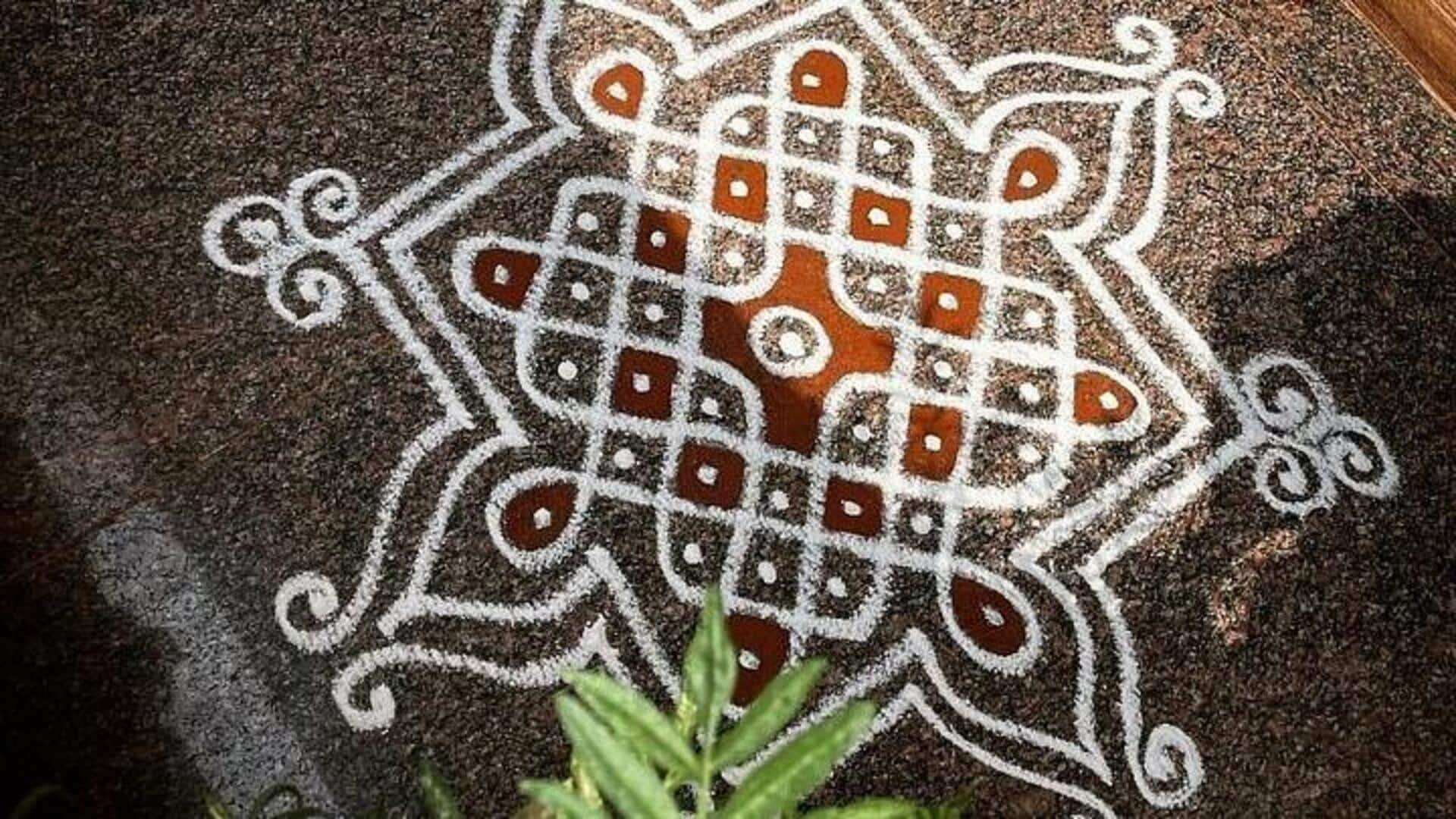
Kolam art: Cultural significance and designs
What's the story
For those unaware, kolam art is a traditional form of drawing in India and has great cultural significance. Mostly practiced in the southern states, the art involves drawing intricate patterns with rice flour or chalk powder. The designs are not just decorative but also represent prosperity and welcome. Kolam art is an inseparable part of daily life and festivals, showcasing the rich heritage and artistic expression of Indian culture.
#1
Cultural importance of kolam art
Kolam art is not just an aesthetic practice, it is a way of life, a reflection of cultural values and traditions of generations gone by. It is said to bring prosperity to homes and is often drawn at the entrance to welcome positive energy. The practice also promotes community bonding as women come together to create these designs, sharing stories, and techniques.
#2
Diverse designs in kolam art
The designs in kolam art can vary from simple geometric patterns to intricate motifs inspired by nature. Each design holds its own significance, with some depicting specific themes like fertility or protection from evil spirits. The symmetry and precision required in creating kolams highlight the skill and creativity involved in this traditional art form.
#3
Role of kolam during festivals
During festivals like Pongal or Diwali, kolams assume a special significance. They are made bigger and more intricate to celebrate these occasions, often mixing vibrant colors with the traditional white powder. This festive display not only makes the celebrations more beautiful but also strengthens cultural identity among communities.
Tip 1
Tips for creating beautiful kolams
For beginners excited to make beautiful kolams, it is best to stick to simple designs and advance to more complicated patterns later. Practice regularly to refine your precision and symmetry. Using natural material such as rice flour would not just make your kolams eco-friendly, but would also contribute to preserving the tradition. It's a combination of sustainability with cultural conservation.